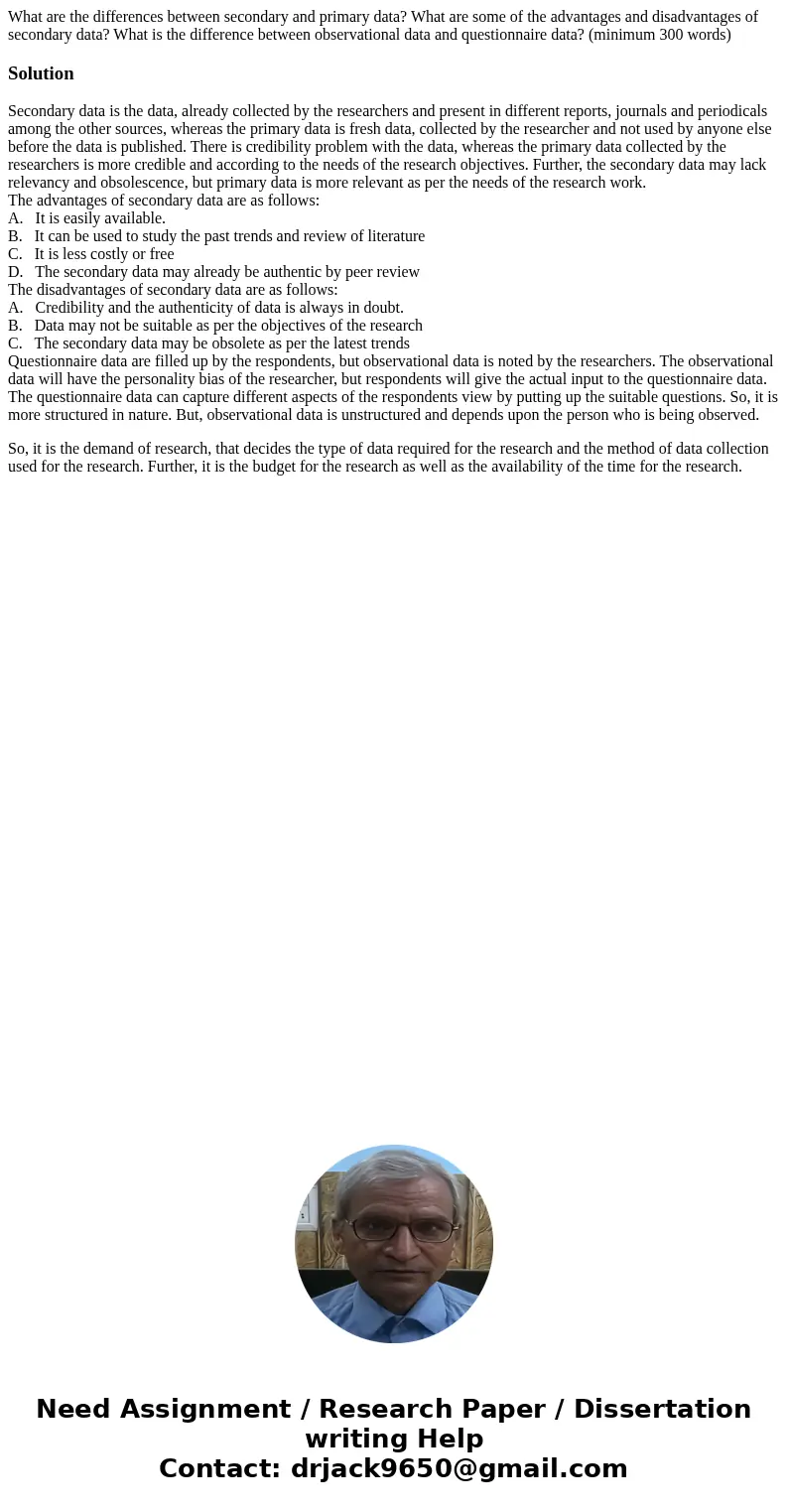What are the differences between secondary and primary data
What are the differences between secondary and primary data? What are some of the advantages and disadvantages of secondary data? What is the difference between observational data and questionnaire data? (minimum 300 words)
Solution
Secondary data is the data, already collected by the researchers and present in different reports, journals and periodicals among the other sources, whereas the primary data is fresh data, collected by the researcher and not used by anyone else before the data is published. There is credibility problem with the data, whereas the primary data collected by the researchers is more credible and according to the needs of the research objectives. Further, the secondary data may lack relevancy and obsolescence, but primary data is more relevant as per the needs of the research work.
The advantages of secondary data are as follows:
A. It is easily available.
B. It can be used to study the past trends and review of literature
C. It is less costly or free
D. The secondary data may already be authentic by peer review
The disadvantages of secondary data are as follows:
A. Credibility and the authenticity of data is always in doubt.
B. Data may not be suitable as per the objectives of the research
C. The secondary data may be obsolete as per the latest trends
Questionnaire data are filled up by the respondents, but observational data is noted by the researchers. The observational data will have the personality bias of the researcher, but respondents will give the actual input to the questionnaire data. The questionnaire data can capture different aspects of the respondents view by putting up the suitable questions. So, it is more structured in nature. But, observational data is unstructured and depends upon the person who is being observed.
So, it is the demand of research, that decides the type of data required for the research and the method of data collection used for the research. Further, it is the budget for the research as well as the availability of the time for the research.

 Homework Sourse
Homework Sourse